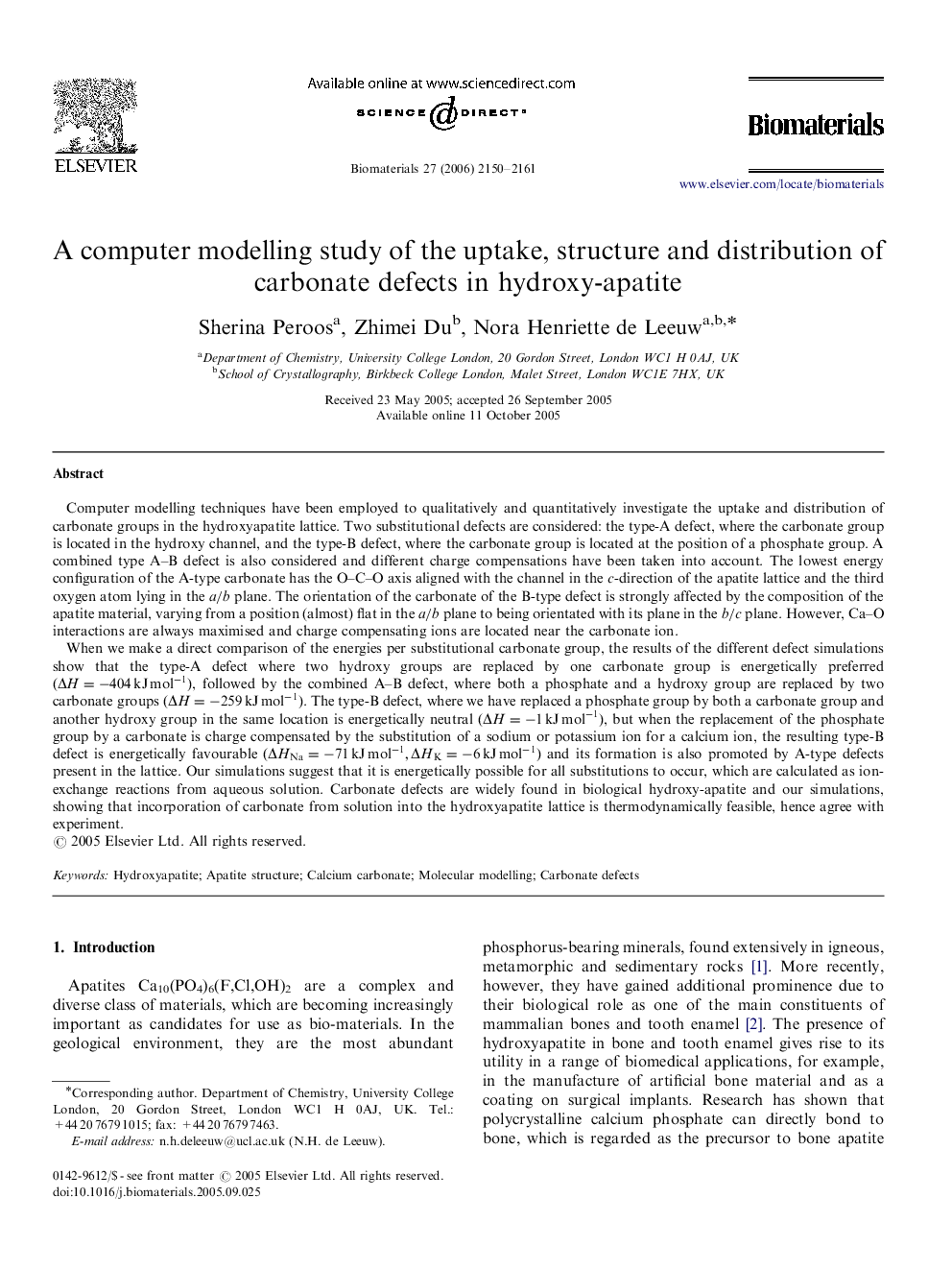| کد مقاله | کد نشریه | سال انتشار | مقاله انگلیسی | نسخه تمام متن |
|---|---|---|---|---|
| 10810 | 702 | 2006 | 12 صفحه PDF | دانلود رایگان |

Computer modelling techniques have been employed to qualitatively and quantitatively investigate the uptake and distribution of carbonate groups in the hydroxyapatite lattice. Two substitutional defects are considered: the type-A defect, where the carbonate group is located in the hydroxy channel, and the type-B defect, where the carbonate group is located at the position of a phosphate group. A combined type A–B defect is also considered and different charge compensations have been taken into account. The lowest energy configuration of the A-type carbonate has the O–C–O axis aligned with the channel in the c-direction of the apatite lattice and the third oxygen atom lying in the a/b plane. The orientation of the carbonate of the B-type defect is strongly affected by the composition of the apatite material, varying from a position (almost) flat in the a/b plane to being orientated with its plane in the b/c plane. However, Ca–O interactions are always maximised and charge compensating ions are located near the carbonate ion.When we make a direct comparison of the energies per substitutional carbonate group, the results of the different defect simulations show that the type-A defect where two hydroxy groups are replaced by one carbonate group is energetically preferred (ΔH=-404kJmol-1), followed by the combined A–B defect, where both a phosphate and a hydroxy group are replaced by two carbonate groups (ΔH=-259kJmol-1). The type-B defect, where we have replaced a phosphate group by both a carbonate group and another hydroxy group in the same location is energetically neutral (ΔH=-1kJmol-1), but when the replacement of the phosphate group by a carbonate is charge compensated by the substitution of a sodium or potassium ion for a calcium ion, the resulting type-B defect is energetically favourable (ΔHNa=-71kJmol-1,ΔHK=-6kJmol-1) and its formation is also promoted by A-type defects present in the lattice. Our simulations suggest that it is energetically possible for all substitutions to occur, which are calculated as ion-exchange reactions from aqueous solution. Carbonate defects are widely found in biological hydroxy-apatite and our simulations, showing that incorporation of carbonate from solution into the hydroxyapatite lattice is thermodynamically feasible, hence agree with experiment.
Journal: Biomaterials - Volume 27, Issue 9, March 2006, Pages 2150–2161